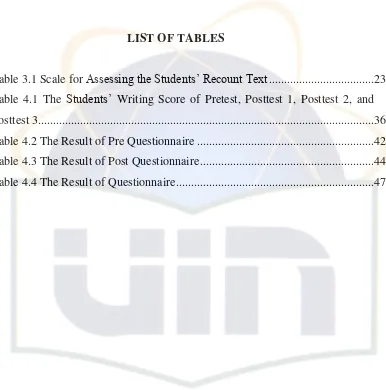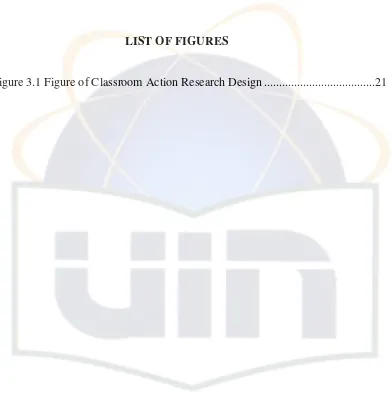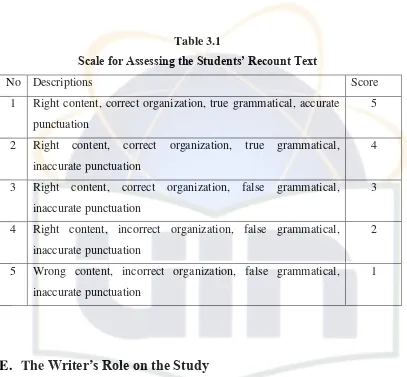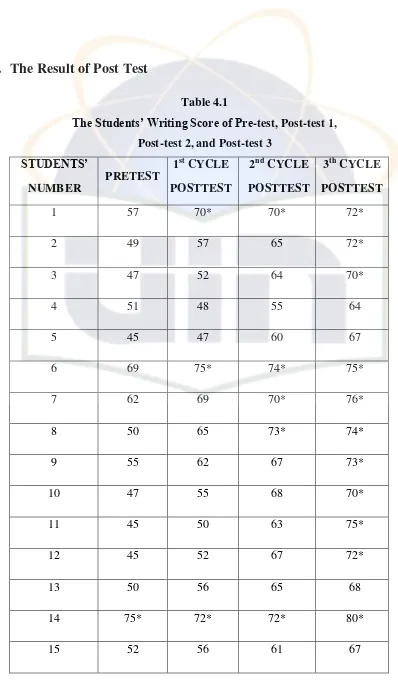I. Introduction
This section sets the context for the classroom action research (CAR) study, outlining the background of the research problem. It highlights the importance of English language proficiency, particularly writing skills, within the Indonesian education system, referencing relevant ministerial decrees. The study focuses on the challenges faced by SMPN 2 Tarumajaya students in writing recount texts, specifically their difficulties in generating ideas. The study proposes the use of the clustering technique as a potential solution to improve students' writing skills and aims to investigate the effectiveness of this technique in the context of recount text writing.
1.1 Background of the Study
This subsection delves into the significance of English language acquisition in Indonesia, emphasizing the challenges students face in mastering writing skills, especially recount text writing. It notes the observed difficulties in idea generation and organization, setting the stage for the introduction of the clustering technique as a potential pedagogical intervention. The choice of SMPN 2 Tarumajaya as the research site is justified based on the researcher's prior observations of the students' writing difficulties and the school's proximity to the researcher's residence.
1.2 Formulation of the Problem
This section clearly states the central research question: Does using the clustering technique improve students' writing of recount texts? This concisely frames the inquiry and provides a focused direction for the research. This direct question allows for a clear and measurable assessment of the intervention's impact.
1.3 Objectives of the Study
The objectives directly address the research question by aiming to determine whether the clustering technique improves students' recount text writing and to explore how this improvement manifests. This clarifies the intended outcomes of the research and guides the methodology and data analysis.
1.4 Scope and Limitations of the Study
This subsection explicitly defines the boundaries of the research. It specifies the target population (second-grade students of SMPN 2 Tarumajaya), the timeframe, and the specific aspects of the clustering technique and recount text writing being investigated. These limitations ensure the study's focus and feasibility.
1.5 Significance of the Study
The potential benefits of the research findings for students, teachers, and future researchers are detailed. This emphasizes the practical implications and potential contributions of the study to the field of English language teaching and learning. This section highlights the broader impact of the research.
1.6 Definition of Key Terms
This subsection provides clear operational definitions for key concepts like 'recount text,' 'clustering technique,' and 'SMPN 2 Tarumajaya.' This ensures consistent understanding and avoids ambiguity throughout the study. The definitions establish a common vocabulary for the reader.
II. Theoretical Framework
This chapter provides the theoretical underpinnings of the study. It explores the concept of writing, its purposes, forms, and types. It delves into the specific characteristics of recount texts, including their generic structure and linguistic features. Finally, it provides a detailed explanation of the clustering technique as a pre-writing strategy, drawing on various scholarly sources to establish its theoretical basis and potential for enhancing students’ writing. The chapter connects theory and practice by linking the chosen technique to the specific challenges faced by students in writing recount texts.
2.1 The Concept of Writing
This subsection explores the multifaceted nature of writing as a communicative tool and a complex skill. It examines writing's role in communication, knowledge creation, and cultural transmission. The discussion includes the challenges inherent in writing, particularly for second language learners, and emphasizes the importance of vocabulary, grammar, and organization in effective writing.
2.2 The Purposes of Writing
This subsection categorizes the various purposes of writing, including informative, persuasive, narrative, and descriptive writing. It provides examples of different types of writing and their functions, showing the broad application of writing across various contexts. This demonstrates that the purpose guides the writing process.
2.3 The Forms and Types of Writing
This section clarifies the different forms and types of writing, distinguishing between narration, description, exposition, and argumentation. It elaborates on these forms, highlighting their respective characteristics and uses in communication. This broad overview provides a context for understanding recount texts.
2.4 The Recount Text
This subsection focuses specifically on recount texts, defining their purpose, generic structure (orientation, events, reorientation), and linguistic features (past tense, temporal connectors, descriptive verbs, first-person pronouns). This provides the necessary background for understanding the focus of the research.
2.5 The Clustering Technique
This subsection provides a thorough explanation of the clustering technique as a pre-writing strategy, drawing upon various scholarly sources. It emphasizes its function in generating and organizing ideas visually, stimulating creativity, and facilitating the writing process. The advantages of using the clustering technique in addressing the problem of idea generation are outlined.
III. Research Methodology
This section details the research design, participants, data collection methods, and data analysis techniques employed in the study. It describes the classroom action research (CAR) approach, outlining the cyclical process of planning, acting, observing, and reflecting. The selection of participants, instruments used (questionnaire, observation sheets, writing tests), and the researcher's role are clearly explained. The data analysis methods are also described.
3.1 Place and Time of the Study
This concise subsection states the location (SMPN 2 Tarumajaya) and duration of the study (March 21st to April 11th, 2011). This provides essential contextual information.
3.2 Research Design
This subsection explains the use of Classroom Action Research (CAR) as the research design, justifying this choice in relation to the research question. The cyclical nature of CAR, including the four stages of planning, acting, observing, and reflecting, is clearly described. The multi-cycle approach allows for iterative refinement of the intervention.
3.3 Population and Sample
This subsection identifies the population (all second-grade students at SMPN 2 Tarumajaya) and the sample (one class of 30 students) participating in the study. The rationale for selecting this sample is given, and the characteristics of the participants are briefly described. This ensures transparency and replicability of the research.
3.4 Research Instruments
The data collection instruments are explained, including questionnaires (pre- and post-intervention), observation sheets to monitor classroom activities, and writing tests (pre-test and post-tests across the three cycles). The methods for scoring student writing are described, providing details on the evaluation criteria.
3.5 The Writer’s Role in the Study
This subsection clarifies the collaborative nature of the research, with the researcher working alongside an experienced English teacher. The roles and responsibilities of each participant in the research process are defined. The collaborative approach is essential for validity and to leverage the teacher's expertise.
3.6 The Stages of Action Intervention
This subsection details the three cycles of the CAR study. Each cycle's stages (planning, acting, observing, reflecting) are described, illustrating the iterative nature of the research process and how findings from one cycle informed the next. The iterative process is crucial in CAR.
3.7 Data and Sources of Data
This subsection specifies the sources of data: student writing samples, observation notes, and questionnaire responses. This clearly identifies the data used in the study's analysis.
3.8 Techniques of Collecting Data
This section outlines the methods used to gather data: administering questionnaires, conducting classroom observations, and collecting student writing samples. The detailed explanation of data collection procedures ensures the integrity and rigor of the study.
3.9 Techniques of Data Analysis
This subsection describes the qualitative and quantitative methods used to analyze the data, such as calculating mean scores for questionnaires, analyzing student writing using a rubric, and interpreting observations to identify trends and patterns. The explanation clarifies how the data was interpreted to support the study’s findings.
IV. Research Findings and Discussion
This section presents the findings of the study. It provides a detailed analysis of the data collected through the questionnaires, observations, and writing tests across the three cycles of the classroom action research. The findings are interpreted and discussed in relation to the research question and the theoretical framework presented earlier. The section demonstrates how the clustering technique impacted students' writing ability and attitudes toward the learning process.
4.1 Research Findings
This subsection presents a summary of the key findings of the study. It synthesizes the results from the various data sources (questionnaires, observations, and writing tests) to provide a comprehensive overview of the impact of the clustering technique on students’ writing skills and attitudes. This provides a holistic view of the research findings.
4.1.1 Analysis of Data (Pre-Implementation, Cycle 1, Cycle 2, Cycle 3, Post-Test, Student Responses)
This subsection presents a detailed analysis of the data collected across the three cycles of the CAR study. It meticulously examines the quantitative and qualitative data from writing tests, questionnaires, and observation notes. The analysis focuses on demonstrating improvements in students’ writing performance and attitudes toward the learning process across each cycle. Comparisons are made between pre-test and post-test results across the cycles to highlight improvements.
V. Conclusions and Suggestions
This concluding section summarizes the key findings of the study, restates the answers to the research questions, and offers recommendations based on the research results. It discusses the implications of the findings for teaching practices and suggests areas for future research.
5.1 Conclusions
This subsection summarizes the main findings of the study, answering the research question about the effectiveness of the clustering technique in improving students' recount text writing. It reflects on the overall impact of the intervention and highlights the significant aspects of the findings. This section provides a clear answer to the research question.
5.2 Suggestions
This subsection provides recommendations for teachers and future researchers based on the study's findings. It offers practical suggestions for incorporating the clustering technique into English language teaching, and proposes potential avenues for further research. This highlights how the findings can be applied in practical settings.







